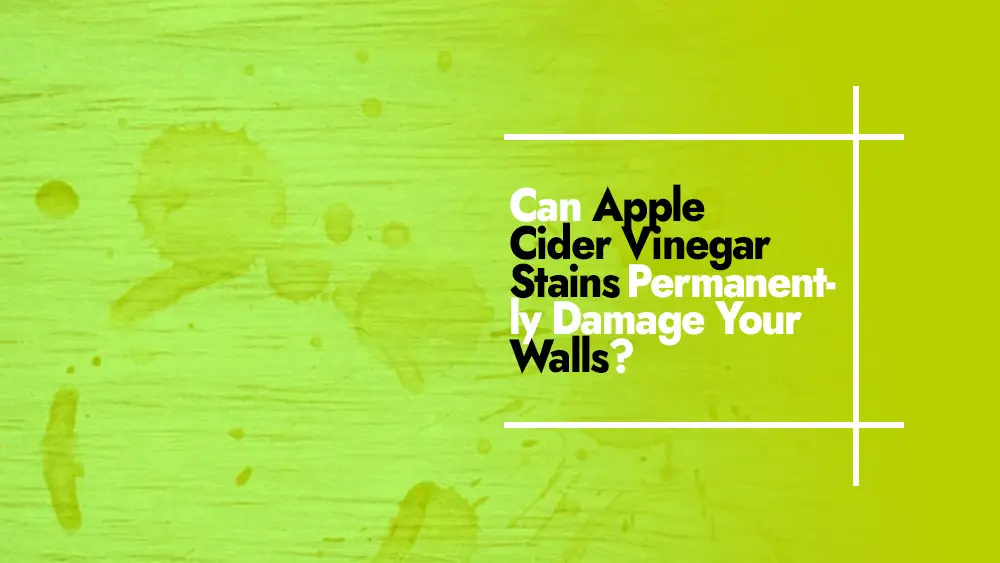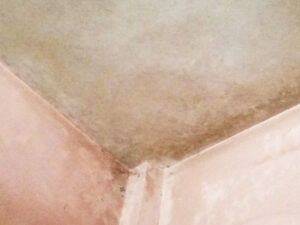As a homeowner who takes pride in keeping their home clean and tidy, I worry a lot about what certain things might do to my walls. I’ve been using apple cider vinegar for different things lately, like cleaning. I couldn’t help but think about what it might do to my walls, though. Can spots from apple cider vinegar damage the wall in a way that can’t be fixed?
This question has been bugging me, making me want to find the answer. I know that vinegar and other acidic liquids can change the color of surfaces and wear away at some materials over time. So, it’s important for me to find out what might happen if I use apple cider vinegar on my walls and if I need to take action right away to stop any damage that can’t be fixed.
In this quest for knowledge, I hope to learn useful things and find good ways to protect the strength of my walls while still taking advantage of apple cider vinegar’s many uses.
Know What Happens to Walls When You Put Apple Cider Vinegar on Them.
It’s important to know how apple cider vinegar affects walls if you want to keep the structure and look of your home in good shape. The pH level of apple cider vinegar is between 2.5 and 3.5, which means it is not very sour. Even though this acidity is usually safe for people to eat, it can have some effects on surfaces like walls.
Most of the time, apple cider vinegar spots don’t damage walls in a way that can’t be fixed. But their effects can be different based on what the walls are made of. Some kinds of paint, especially cheap or water-based paints, can be more likely to get stained by vinegar. Long-term contact with apple cider vinegar can weaken or change the color of these paints, causing them to fade, peel, or form ugly blotches.
Apple cider vinegar spots can also damage wallpaper, especially if it hasn’t been sealed or protected properly. When the vinegar gets into the paper, it can make it curl, peel, or change color.
It’s important to remember that the amount of damage caused by apple cider vinegar stains varies on a number of things, such as the concentration of the vinegar, how long it stays on the wall, and how the wall is made. Cleaning up any spills or splatters right away and using the right cleaning methods can help limit the damage.
Can Spots from Apple Cider Vinegar Do Damage to the Wall that Won’t Go Away?
Most marks from apple cider vinegar do not damage walls in a way that will last. But their effects can be different based on the kind of wall material and how long the vinegar stays on the surface. Apple cider vinegar is slightly acidic, and long-term contact with it could weaken or change the color of some paints or wallpapers.
If left for a long time without being fixed, it could cause the paint to fade or peel. Also, vinegar marks can be easier to see on porous surfaces like wood that haven’t been treated or sealed.
To prevent lasting damage, it’s best to clean up any apple cider vinegar that gets on the walls as soon as possible. Start by gently dabbing the area with a clean cloth or sponge, but don’t rub too hard. Then, wet another cloth with a solution of mild soap and water and gently dab the spot. Rinse with clean water.
Before putting the cleaning solution on the spot, it’s best to test it on a small, unnoticeable area to make sure it doesn’t have any bad effects. By taking these steps and cleaning up vinegar stains quickly, you can lower the chance that your walls will be damaged for good.
Common Signs That Apple Cider Vinegar Stains Have Caused Wall Damage
If apple cider vinegar spots aren’t taken care of or cleaned up properly, they could damage the walls. Apple cider vinegar stains can cause damage to walls, so it’s important to know what those signs are so that you can move quickly. Here are a few usual warning signs:
Discoloration
The discoloration is one of the most obvious signs that apple cider vinegar spots have done damage to the wall. On lighter-colored walls, the impacted area may look darker or have a stain that stands out. When vinegar is left on a wall for a long time, the discoloration can become more noticeable.
Paint that is fading or peeling
If apple cider vinegar spots aren’t taken care of quickly, they can damage the paint. Because vinegar is acidic, it can cause paint to fade or peel, leaving odd spots or bare walls. Peeling paint can also allow water to get into the wall, which can cause more damage.
Blotches or Spots
If you don’t clean up apple cider vinegar marks well, they can leave behind blotches or spots on the wall. These spots may look like concentrated areas of discoloration that take away from the wall’s general look.
Changes in Texture
Sometimes, apple cider vinegar spots can change the way the wall feels. The affected area might get rough, lumpy, or even feel a little bit sticky. Changes in texture can make the wall surface look bad and may mean that more repair work is needed.
Wallpaper Damage
If you don’t clean up apple cider vinegar spots quickly, they can also damage the wallpaper. Because vinegar is acidic, it can make the wallpaper buckle, peel, or change color. Wallpaper that has vinegar spots should be cleaned carefully so that more damage doesn’t happen.
If you see that apple cider vinegar stains are causing damage to the wall, you should move right away. Cleaning the spots right away with the right cleaning methods can help keep the walls from getting worse and keep them from falling apart. If the damage is big or hard to fix, you may need to hire a professional to fix the wall and make it look and work like new again.
How to Get Apple Cider Vinegar Stains Off Walls in a Safe Way
Apple cider vinegar stains on walls can be ugly, but if you do it the right way, you can get rid of them. Here are some safe ways to get rid of spots from apple cider vinegar on walls:

Check out the wall’s surface
Find out what kind of wall surface you are working with before you try to clean it. To keep from doing more damage, different things may need to be cleaned in a certain way. Paint, wallpaper, or decorative surfaces are all common ways to cover a wall.
Get the supplies you need
Gather the following items to safely get rid of spots caused by apple cider vinegar:
- Clean brushes or soft cloths
- Use mild dish soap or a cleaning solution that doesn’t scratch.
- Warm water
- You could also use white vinegar to clean.
- Bucket or other containers for mixing the cleaning solution
- Spray bottle (not required)
- Check a small spot
To make sure your cleaning solution doesn’t hurt anything, you should try it out on a small, unnoticeable part of the wall first. Apply the solution and gently blot the area. Look for any discoloration, damage, or bad responses. If there are no problems, you can clean up the spot.
Walls Need to be Cleaned
Start by dampening a cloth or sponge with warm water and wiping down the painting walls. Be careful not to rub too hard on the spot caused by apple cider vinegar. If the spot doesn’t come out, mix mild dish soap with warm water to make a cleaning solution. Use the solution to wet another cloth or sponge and gently blot the spot. Then, rinse with clean water. Use a clean cloth to dry the area.
How to Deal with Wallpaper and Rough Surfaces
Apple cider vinegar marks are harder to get out of wallpaper or textured surfaces because you have to be more careful. First, use a clean, damp cloth or sponge to dab at the spot. Don’t use too much water or rub too hard, because this can cause damage.
If the stain doesn’t go away, put white vinegar and warm water in a spray bottle and use it to spray the spot. Spray the problem area lightly and let it sit for a few minutes. Use a clean cloth to gently blot the spot, being careful not to get the wallpaper or textured surface too wet. Rinse with clean water and wipe dry with a damp cloth.
Final Thoughts
In the end, apple cider vinegar spots can be ugly, but they usually don’t damage walls in a way that can’t be fixed. But the effect may be different based on the type of wall material and how long it hits. Permanent damage can be prevented by taking care of a spill right away and cleaning it the right way.
It’s important to wipe up the spot right away, use gentle cleaning products, and not rub or scrub too hard. You should also try out any cleaning method on a small, unnoticeable spot first. By taking these steps, you can get rid of apple cider vinegar spots and keep your walls in good shape and looking good.







